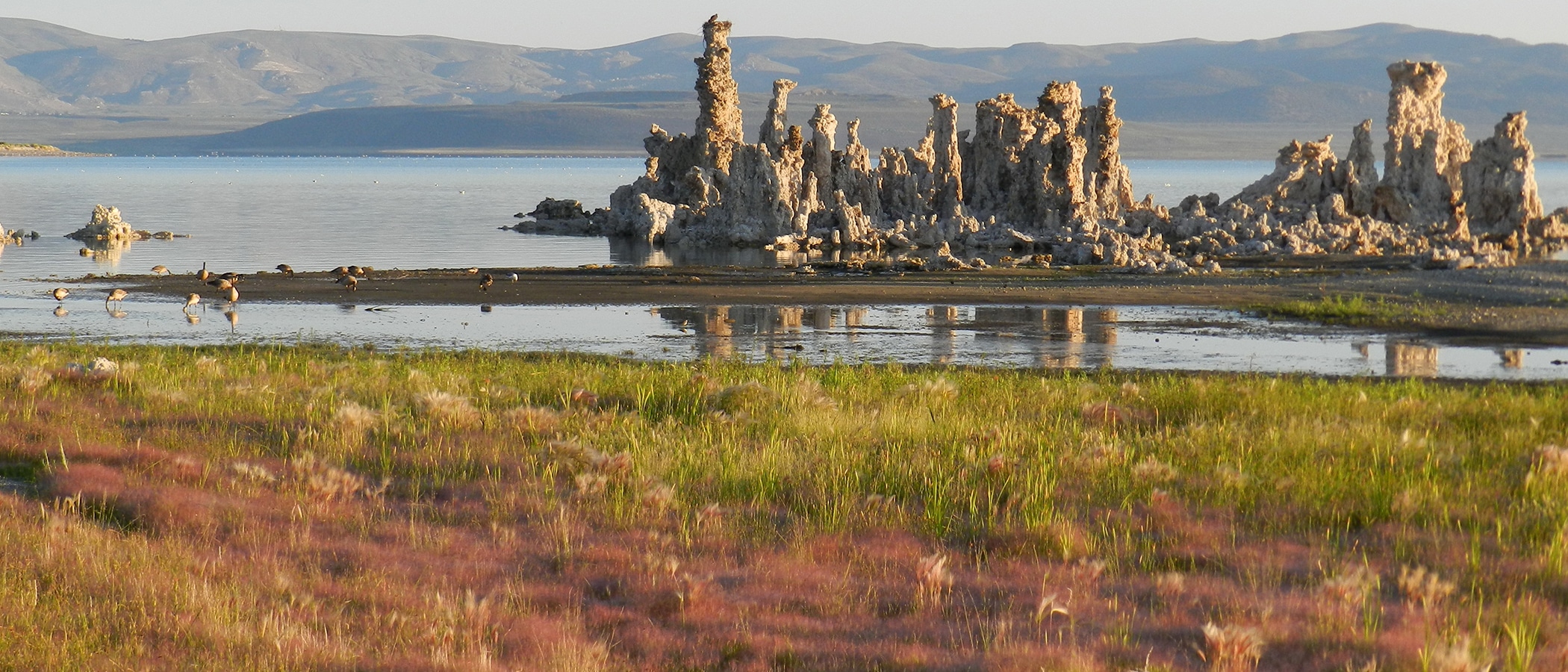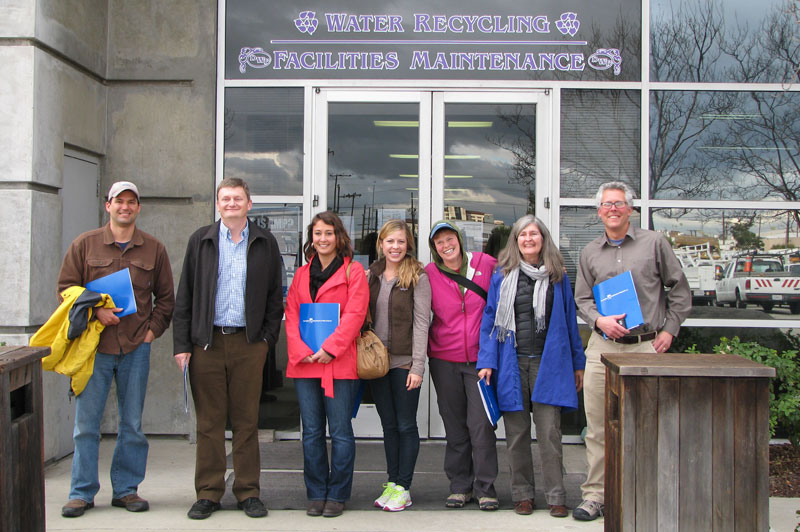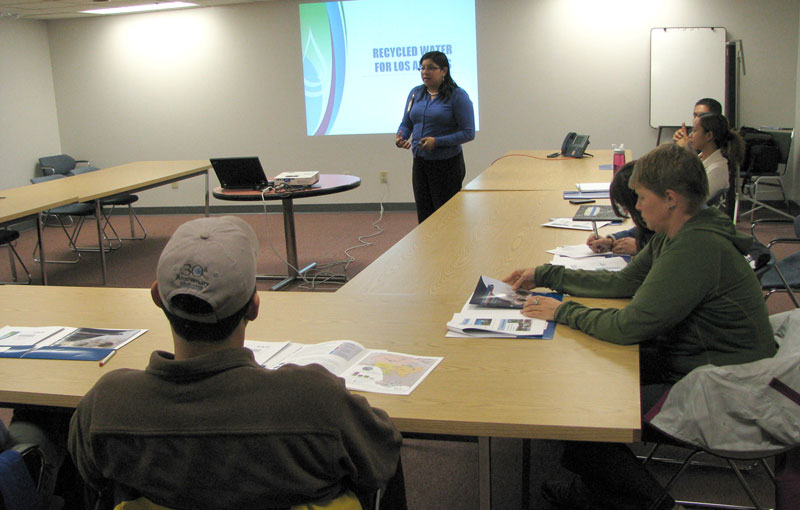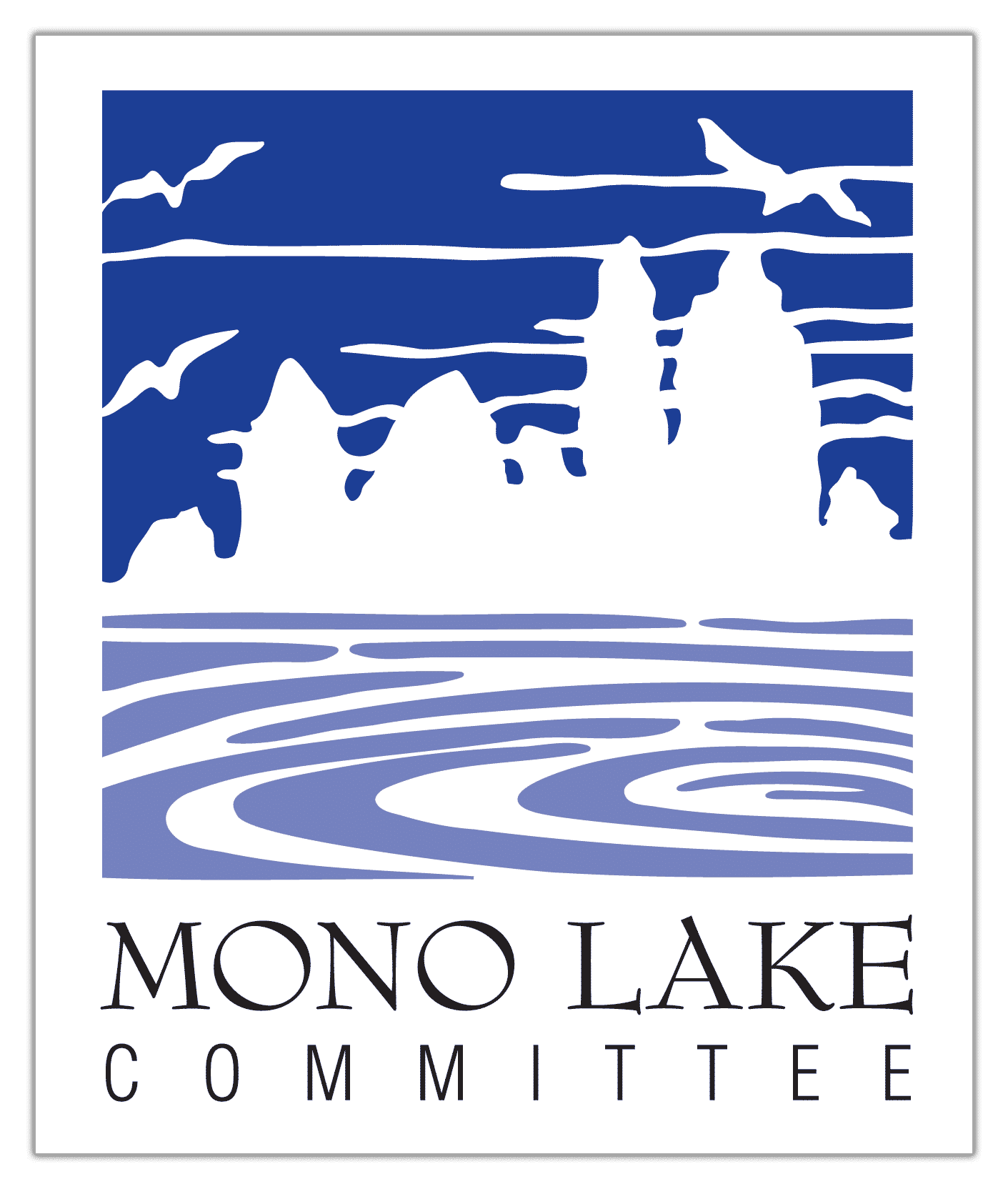
After our OCWD GWRS facility tour, the Committee staff had water recycling on the brain. We were fortunate to be able to meet with Evelyn Cortez-Davis, Manager of Water Recycling Regulatory Affairs at the Los Angeles Department of Water and Power (DWP), and two of her staff, Jennifer and Ralph, to continue the recycled water discussion.

Since Los Angeles depends largely on imported water sources (like the water that flows from the Mono Basin down the Los Angeles Aqueduct), looking for ways to increase their recycled water capacity is vitally important. With this in mind, the City commissioned the Recycled Water Master Plan process in 2009; the group of City departments, consultants, public agencies, and advisory groups (including the Mono Lake Committee) finished the master plan last fall.
The master plan calls for increasing LA’s recycled water capacity to 59,000 acre-feet a year (afy) by 2035. At this time DWP recycles only about 5,000 afy. It’s a challenging goal, and DWP plans to combine the water recycling effort with increased water conservation, enhanced stormwater capture, and groundwater cleanup to maximize local water supply.
Evelyn, Jennifer, and Ralph are energized and serious about the water recycling possibilities for LA. But they also spoke to us about the considerable challenges DWP faces in expanding water recycling. For one thing, the lion’s share of LA’s wastewater goes to the Hyperion Treatment Plant, which is located west of LAX right next to the ocean. Getting treated wastewater from Hyperion into spreading basins where it could percolate into the ground would entail pumping it north over the Santa Monica Mountains and into the San Fernando Valley, a distance of about 30 miles … an expensive and difficult operation.

Another challenge Evelyn explained to us is the difficulty of adding “purple pipe”—the dedicated recycled water piping—to an already-established city-wide plumbing system. She pointed out that it’s relatively easy to get recycled water to areas near wastewater treatment plants, but the farther recycled water has to get pumped to say, irrigate a park, the more expensive and disruptive it will be to lay the purple pipe to that location. Imagine tearing up miles of streets, condemning properties, and irritating the neighbors as you go … it’s a very real challenge to increasing recycled water capacity.
We came away from our time with Evelyn and her staff feeling optimistic, yet sobered, about the opportunities and challenges that face water recycling. Thank you Evelyn, Jennifer, and Ralph for taking the time to meet with us!
Lots of great information about DWP’s recycled water efforts can be found in their Executive Summary report. You can download a PDF of the report by clicking on the link shown below on this page:

